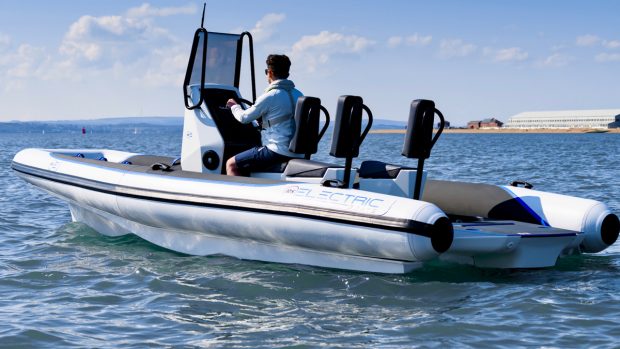Ray Bulman bemoans modern safety practices
The only health and safety I can remember when I first went to sea over 60 years ago was inoculation against smallpox and diphtheria.
This doesn’t mean that British maritime authorities were haphazard, far from it. Customs and port health authorities required all ships arriving from abroad to fly the yellow ‘Q’ flag. This sent the message ‘my vessel is healthy and I request free pratique’.
I well remember coming up the Thames tideway on trips between Ramsgate and Upper Thames and being challenged on many occasions by a host of customs cutters beginning off Gravesend, with a final challenge hailed in the Pool of London. “Departure port, home or abroad?”
It was a good system which only expired with our entry into the European Community, but today, apart from the arrival of various once-eliminated diseases, we now have illegal immigrants hopping across the Channel, drug runners, religious fanatics and many other undesirables. All would have been challenged in the old days by customs and/or coastguards – both agencies now under threat by the current round of government cuts.
We do, of course, have the UK Border Agency, an organisation that has received a great deal of criticism from domestic boating, the RYA in particular, which I find strange. If we want to guard our coast there has to be a certain amount of inconvenience and judged by my own experiences covering high-speed powerboating both at home and the USA in particular, there are a lot of crooks out there.
Going back to the memories of my youth, I seem to remember we in Britain boasted no restriction whatsoever for venturing on the sea. One could set off in a barrel if this turned you on and if you later drowned it was all down to you and not the party who sold you the barrel in the first place. Not so today. The vendor would be up in court no doubt accused of manslaughter.
I paddled a canoe across the Channel at the age of 19 accompanied by a single fellow canoeist. There was no escort and the crossing took 18 hours. We could easily have been lost but little would have been said apart from criticism for setting off in the first place.
But nowadays, the Maritime and Coastguard Agency (MCA) tend to introduce rules and regulations that are sometimes impossible to comply with. A recent one is a heeling test which all craft carrying more than 12 passengers must pass if their owners want to continue working for gain. Majestic (pictured) is a fine example.
Built in 1902 by Samuel Wight in Cowes, Majestic is a 42ft (12.8m) traditional umpire launch that’s officiated at a huge number of major rowing events, including the annual university boat race and Henley Regatta. She has been owned and operated for two generations by Newens Marine at Putney, a well-known Thames family and one with a spotless safety record. But it now seems their association with Majestic has come to an end.
To enable an umpire launch to keep pace with a rowing eight without creating a wash, all traditional boats of this type have been long and narrow. Majestic has a beam of around 6ft (1.8m), which, of course, would not pass any heeling test likely to satisfy an MCA inspector. This leaves Newens Marine no alternative but to put her on the market.
Majestic is now 109 years old and never once has she or her umpiring consorts capsized. I just wonder what other restricting regulations our governing authorities have up their sleeves in the name of ‘elf ‘n’ safety’?
Subscribe to the print version of MBY; subscribe to the digital version of MBY









